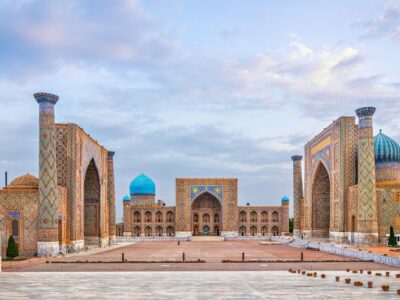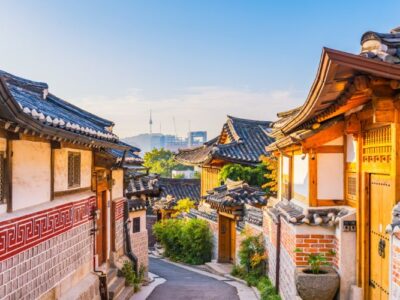
As winter approaches, planning an exciting getaway is a great time. If you’re looking for a place that combines the charm of a lively city with the magic of winter celebrations, think about heading to the Iberian Peninsula. This sunny destination is full of culture, history, and delicious food. For Indians thinking about a trip to Spain, it all begins with the excitement of discovering a place where history blends seamlessly with modern life. IndiGo provides comfortable flights from major Indian cities to Spain, making it simple for travellers to explore the diverse landscapes of the Iberian Peninsula.
Experience the Iberian winter, where historic cities light up with festive lights, decorations, and a contagious atmosphere of celebration. Whether you’re captivated by the charm of Lisbon’s age-old districts or the lively vibe of Barcelona’s streets, every corner of the Iberian Peninsula offers a memorable winter adventure. Plan your flight from India to Spain with IndiGo and let the warmth of Iberian hospitality and the joy of winter festivities create unforgettable memories. Your chance for savings is ready, ensuring your winter exploration is seamless and magical.
Iberian Peninsula: A peninsula in Southwestern Europe
The Iberian Peninsula, located in southwestern Europe, is majorly occupied by the countries of Spain and Portugal. The Atlantic Ocean bounds it to the west and southwest, the Mediterranean Sea to the east and southeast, and the Pyrenees mountain range to the northeast. The Strait of Gibraltar, which separates the peninsula from North Africa, is to the south. It is known for its diverse landscapes, including mountainous regions, plateaus, and coastal areas, making it a geographically rich and culturally significant part of Europe.
Beyond its geographical features, the peninsula holds a deep historical and cultural significance. The region has been home to various civilisations, including the Iberians, Celts, Romans, Visigoths, Moors, and more. This diverse historical background has indented Spain and Portugal’s architecture, traditions, and languages.
Spain, the larger of the two leading countries on the peninsula, boasts a remarkable array of climates and ecosystems. From the green landscapes of the north, with its lush forests and coastal scenery, to the arid plains of the central region and the mountainous terrains of the Pyrenees and Sierra Nevada, Spain’s geography is as diverse as its cultural heritage.
Best Places to Visit in the Iberian Peninsula
The Iberian Peninsula has diverse landscapes, rich history, and vibrant cultures, offering many places to visit.
- Barcelona, Spain: Barcelona is a cosmopolitan city on the northeast coast of the Iberian Peninsula. It is known for its unique architecture, including the iconic Sagrada Familia and the works of Antoni Gaudí. Explore the historic Gothic Quarter, relax on the city’s beaches, and savour delicious Catalan cuisine.
- Madrid, Spain: Madrid, the capital of Spain, is a cultural hub with world-class museums like the Prado and Reina Sofia. Wander through the lively streets, visit the Royal Palace, and enjoy the vibrant nightlife in this dynamic metropolis.
- Seville, Spain: Located in the Andalusian region, Seville is famous for its Moorish architecture, including the Alcázar and the Giralda Tower. The city’s lively atmosphere, especially during events like Semana Santa and Feria de Abril, is a must-experience.
- Granada, Spain: Home to the stunning Alhambra palace and fortress complex, Granada is a city that seamlessly blends Islamic and Christian influences. Wander through the Albaicín neighbourhood’s narrow streets and enjoy spectacular vistas of the Sierra Nevada mountains.
- Toledo, Spain: Toledo is known for its medieval architecture, including the Toledo Cathedral and the Alcázar. It is a UNESCO World Heritage Site. It offers a journey back in time with its well-preserved historic sites.
- Salamanca, Spain: Famous for its historic university and stunning Plaza Mayor, Salamanca is a UNESCO-listed city with a wealth of architectural gems. The city’s golden sandstone buildings give it a warm and inviting atmosphere.
- Valencia, Spain: Known for its futuristic City of Arts and Sciences, Valencia also boasts beautiful beaches, a historic old town, and the lively Mercado Central. Don’t miss trying the traditional paella, which originated in this region.
Festivities in Winter in the Iberian Peninsula
In the winter, the Iberian Peninsula comes alive with festive celebrations illuminating the chilly season with warmth, merriment, and cultural richness. While not as widely known for winter festivals as other northern European countries, Spain and Portugal have unique traditions during this time.
While winters in the Iberian Peninsula might not be characterised by heavy snowfall, the festive spirit and cultural celebrations during this season add a unique charm to the region. Visitors can experience the warmth of the Iberian winter festivities.
- Christmas Markets (Various Cities): Many cities across Spain host enchanting Christmas markets, such as the one in Madrid’s Plaza Mayor. These markets offer a festive atmosphere with stalls selling crafts, decorations, and seasonal treats.
- Three Kings’ Day (Día de Reyes): Celebrated on January 6th, Three Kings’ Day marks the culmination of the Christmas season. Parades occur across Spain, with the Three Wise Men throwing sweets to crowds. Families gather for festive meals, and children receive gifts.
- Las Fallas (Valencia): While Las Fallas is traditionally a spring festival, it begins with the “Plantà” phase in late February, with intricate sculptures placed in the streets. The festival culminates on March 19th, known as the Night of Fire, but the winter months see the early preparations and anticipation building.
Food Culture in the Iberian Peninsula
The Iberian Peninsula is a culinary haven known for its diverse and flavorful cuisine that reflects the region’s rich cultural history. Spain boasts unique dishes and culinary traditions that have captivated food enthusiasts worldwide. The food items are renowned for their high-quality olive oils, used in various recipes and are a key component of Mediterranean cuisine. It offers an array of delicious cheeses like Manchego.
Here are some famous foods from the Iberian Peninsula:
- Paella: Originating from the Valencia region, paella is a saffron-infused rice dish cooked with various ingredients. Traditional versions include seafood, rabbit, and chicken.
- Tapas: Spain is renowned for its tapas culture, featuring small, shareable dishes. Patatas bravas (fried potatoes with spicy tomato sauce), gambas al ajillo (garlic shrimp), and jamón ibérico (cured ham) are popular choices.
- Gazpacho: Especially popular during hot summers, gazpacho is a refreshing cold soup made with tomatoes, peppers, onions, cucumbers, and garlic.
- Churros with Chocolate: A beloved Spanish breakfast or snack, churros are deep-fried dough pastries served with thick hot chocolate for dipping.
- Pulpo a la Gallega: Hailing from the Galicia region, this dish features octopus cooked with potatoes, paprika, and olive oil.
- Pastel de Nata: These custard tarts with a flaky pastry crust and a creamy egg custard filling are a Portuguese pastry delight. They are often dusted with cinnamon and powdered sugar.
- Francesinha: Hailing from Porto, the Francesinha is a hearty sandwich with layers of cured meats, sausages, and steak, covered in melted cheese and a spicy tomato and sauce.
- Caldo Verde: This green soup, a Portuguese comfort food, features kale, potatoes, chorizo, and sometimes other vegetables.
Famous Monuments in the Iberian Peninsula
Spain, with its rich history and diverse regions, is adorned with famous monuments that symbolise the country’s cultural and architectural heritage. Among these, the Sagrada Familia in Barcelona is a testament to the genius of architect Antoni Gaudí. Here are other famous monuments to visit in Spain.
- Alhambra: The Alhambra is a UNESCO World Heritage Site. It is an architectural gem that is a testament to Spain’s Moorish history. Perched atop a hill overlooking Granada, this palace and fortress complex was initially constructed in the mid-13th century and later renovated by the Nasrid Dynasty. The intricate stucco work, geometric tile patterns, and serene Generalife Gardens are highlighted, offering visitors a captivating journey through Islamic art and culture.
- Sagrada Familia: Antoni Gaudí’s magnum opus, the Sagrada Familia, is a perpetual work in progress and a symbol of Barcelona. The basilica is a UNESCO World Heritage Site with its towering spires and unique architecture. Gaudí’s ingenious use of symbolism, intricate facades, and a mesmerising interior make it one of the most visited landmarks in Spain.
- Park Güell: Park Güell, another creation by Gaudí in Barcelona, is a public park that enchants visitors with its colourful mosaics, whimsical sculptures, and panoramic views of the city and the Mediterranean. The garden reflects Gaudí’s innovative design approach and ability to integrate architecture with nature seamlessly.
- La Rambla: La Rambla, a bustling tree-lined street in the heart of Barcelona, is famous for its lively atmosphere, street performers, and many shops. Stretching from Plaça de Catalunya to the Christopher Columbus Monument, La Rambla is a vibrant thoroughfare that captures the spirit of the city.
- Prado Museum: In Madrid, the Prado Museum stands as a cultural treasure trove, housing a vast collection of European art from masters such as Goya, Velázquez, and El Greco. The museum offers a journey through centuries of artistic expression, making it a must-visit for art enthusiasts.
- Royal Alcazar: The Royal Alcazar in Seville is a royal palace that showcases a blend of Mudejar, Gothic, Renaissance, and Baroque architecture. With its stunning gardens, intricately designed courtyards, and opulent rooms, the Alcazar is a UNESCO World Heritage Site that immerses visitors in Spain’s regal history.
- Guggenheim Museum: Moving to Bilbao, the Guggenheim Museum is a modern masterpiece designed by Frank Gehry. With its distinctive titanium cladding and innovative architecture, the museum houses a remarkable collection of contemporary art and is also a work of art.
- Toledo Cathedral: Toledo Cathedral, a Gothic masterpiece, dominates the skyline of Toledo. The cathedral’s awe-inspiring architecture, numerous chapels, altars, and artistic treasures make it a significant religious and cultural landmark.
- Puerta del Sol: Puerta del Sol in Madrid is the city’s central square and a hub of activity. Home to landmarks such as the equestrian statue of King Charles III and the iconic Tio Pepe sign, Puerta del Sol is a popular gathering place that buzzes with energy.
- Mosque-Cathedral of Córdoba: The Mosque-Cathedral of Córdoba is a unique architectural gem that symbolises the cultural and religious history of Córdoba. The juxtaposition of Islamic and Christian elements, including a hypostyle hall with over 850 columns, makes it a fascinating testament to Spain’s diverse heritage.
Conclusion
Explore the diverse landscapes, rich history, and vibrant cultures that define this captivating region with India to Spain flight. With IndiGo’s convenient flights, your journey becomes seamless, allowing you to uncover the winter allure of the Iberian Peninsula. Booking directly on the IndiGo app unlocks an exclusive offer of up to 10% off on all domestic and international flights. This discount enhances your travel experience and opens the door to discovering the magic of winter in the Iberian Peninsula. So, pack your bags, set your sights on Sunny Spain, and let the adventure unfold.
Book your India to France flight and let us know in the comment section which city you plan to visit.











